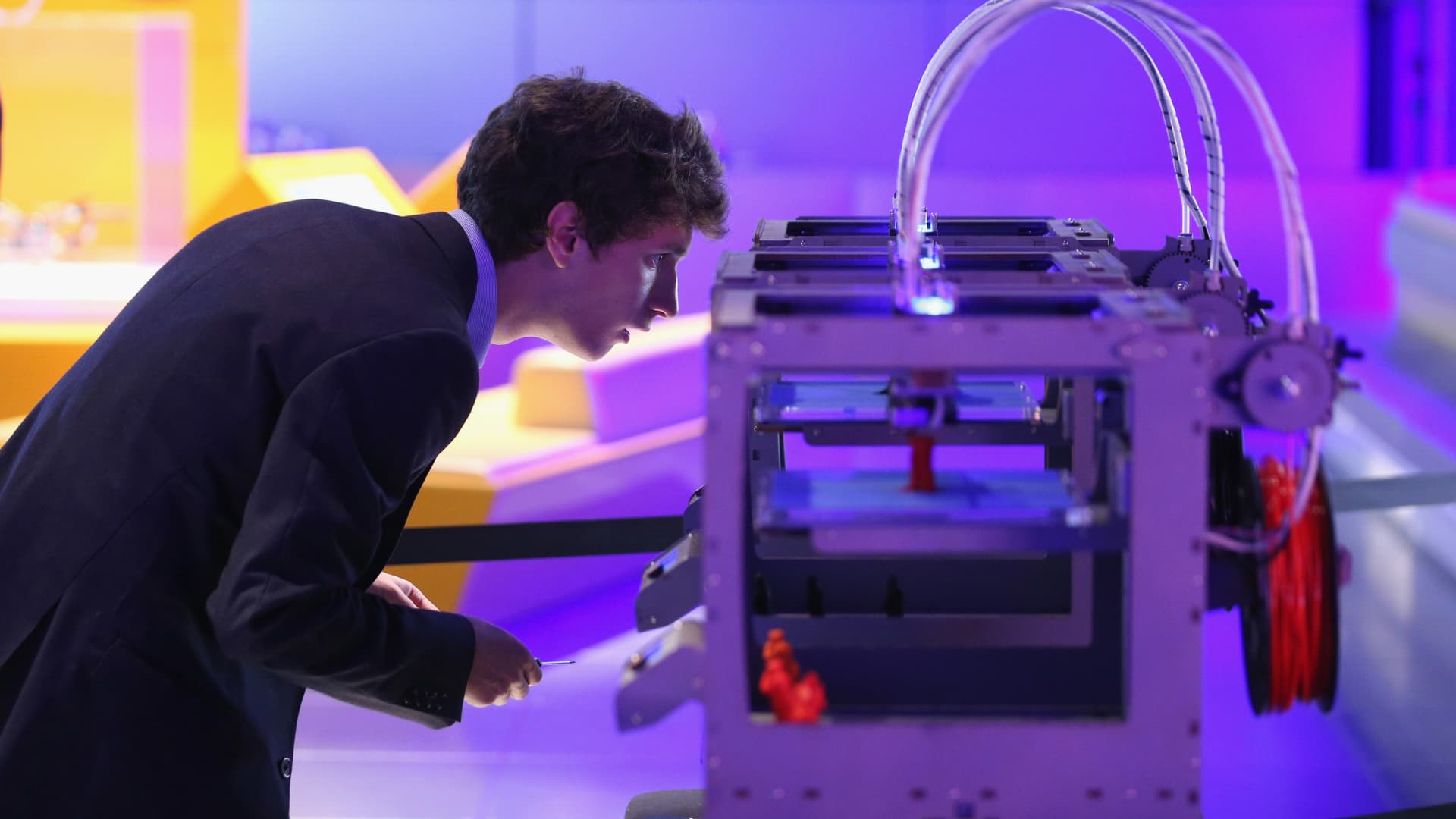
A new era of 3D printing “microfactories” is helping to turn waste plastics into “highly competitive” products fit for use in the construction industry, according to Veena Sahajwalla, professor and founding director of UNSW Sustainable Materials Research and Technology (SMaRT) Centre.
Speaking to CNBC’s Mandy Drury at Schneider Electric’s Sydney Innovation Summit on Monday in Australia, Sahajwalla said manufacturers had to direct their thinking around sustainability toward profitability.
“It’s not about saying, well I’m making it because its green. Actually, that should be the last thing. The first thing has to be profitability, does it work? Is it showing the right performance?” she said.
That thinking has pushed SMaRT to build plastic filaments made from 100% waste plastics, sourced from “all kinds of old printers.”
They are built in hyper-localized, heavily automated “microfactories” to produce personalized products.
“If this [waste-made plastic] can now be fed into a 3D printer, can you actually print a whole range of products?” she said.
One such product already made are “clamps” — or blocks — used in building and construction projects.
“Imagine all the building and construction projects where you need plants and imagine if you had to wait a long time to source these parts and components,” said Sahajwalla.

The large outlay on plants during construction projects means companies often purchase them secondhand.
SMaRT’s 3D-printed alternative, built in a Sydney microfactory using plastic filaments made from older, plastic waste, could ultimately lower costs, says Sahajwalla.
“You could literally talk to your local microfactory and say, can I make this at a comparative price and the right kind of performance?”
“This is where microfactory technologies have come in. To really close the gap to between what is seen as a waste on one hand and on the other hand make something that is high performance, high tech and competitively closing the gap.”
Hydrogen revolution?
Autonomous trucks and buses, powered by clean hydrogen-based energy, are on the cusp of hitting the roads, thanks to a technology still in its infancy.
Scott Brown, managing director of pure hydrogen, told CNBC that his firm now has a hydrogen-powered garbage truck in the city of Adelaide emitting “no diesel pollution, which can be detrimental to your health if you breathe it in,” as well as less noise pollution waking residents up during the morning garbage run.
He predicts a drop in fuel cell prices in the coming 10 to 15 years.
Car manufacturers Honda, Toyota and Hyundai have already adopted more fuel cell engineering.
Fuel cells refer to the use of hydrogen or other fuels to produce clean electricity.
“There’s not a lot of material involved. It looks like a PC and you put it into — in our case — a truck or a bus,” Brown said.
Because of its increasingly cost-effective production, fuel cell prices have come down “about 50% in the last three years,” he added.
Brown predicts that clean energy battery cell prices will “fall dramatically” in the coming decade as Chinese companies adopt more hydrogen-powered vehicles.
According to figures released by South Korean analysts SME Research Group in November, sales of hydrogen-powered commercial vehicles in China outnumbered purchases across the world.





